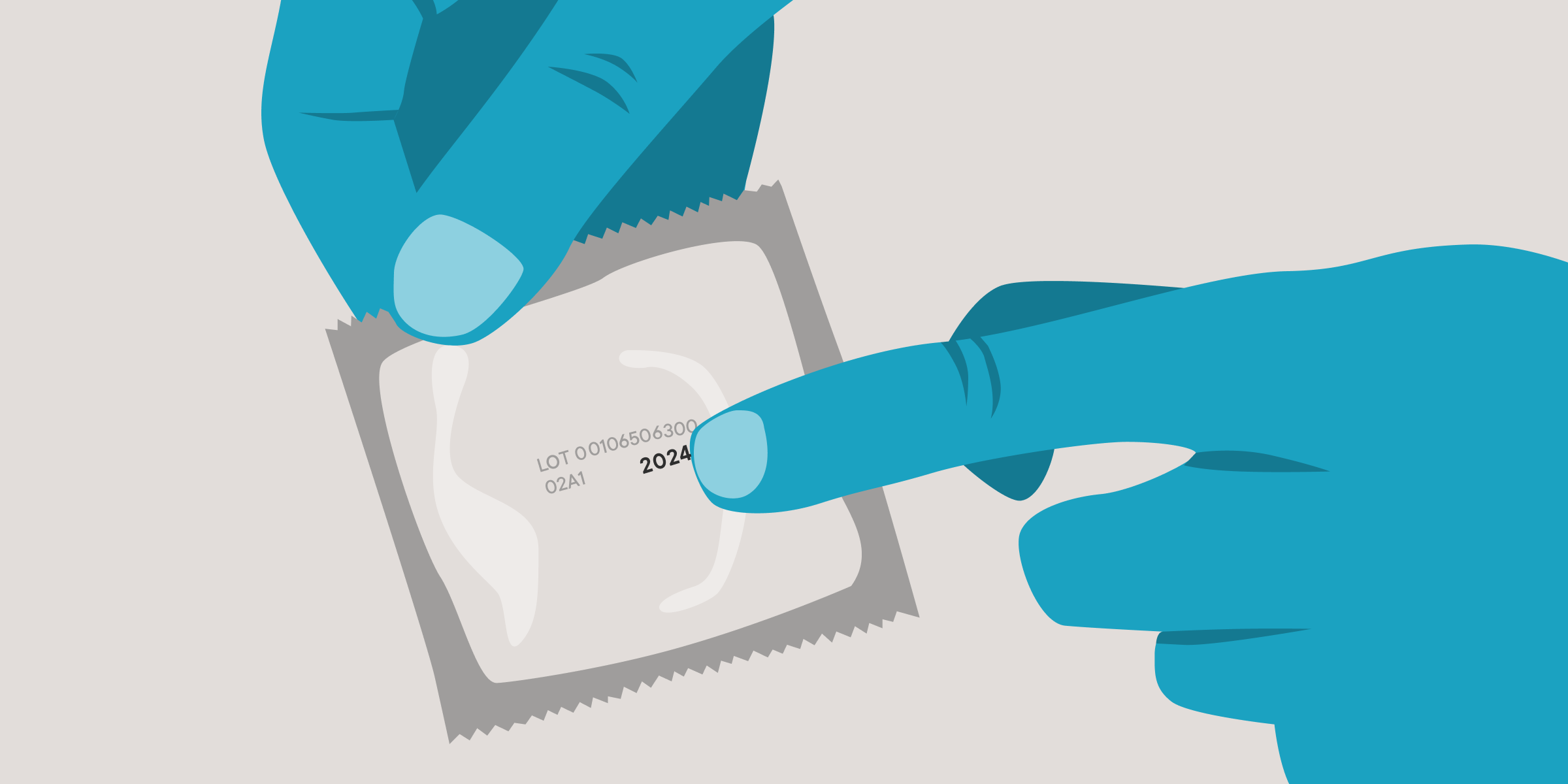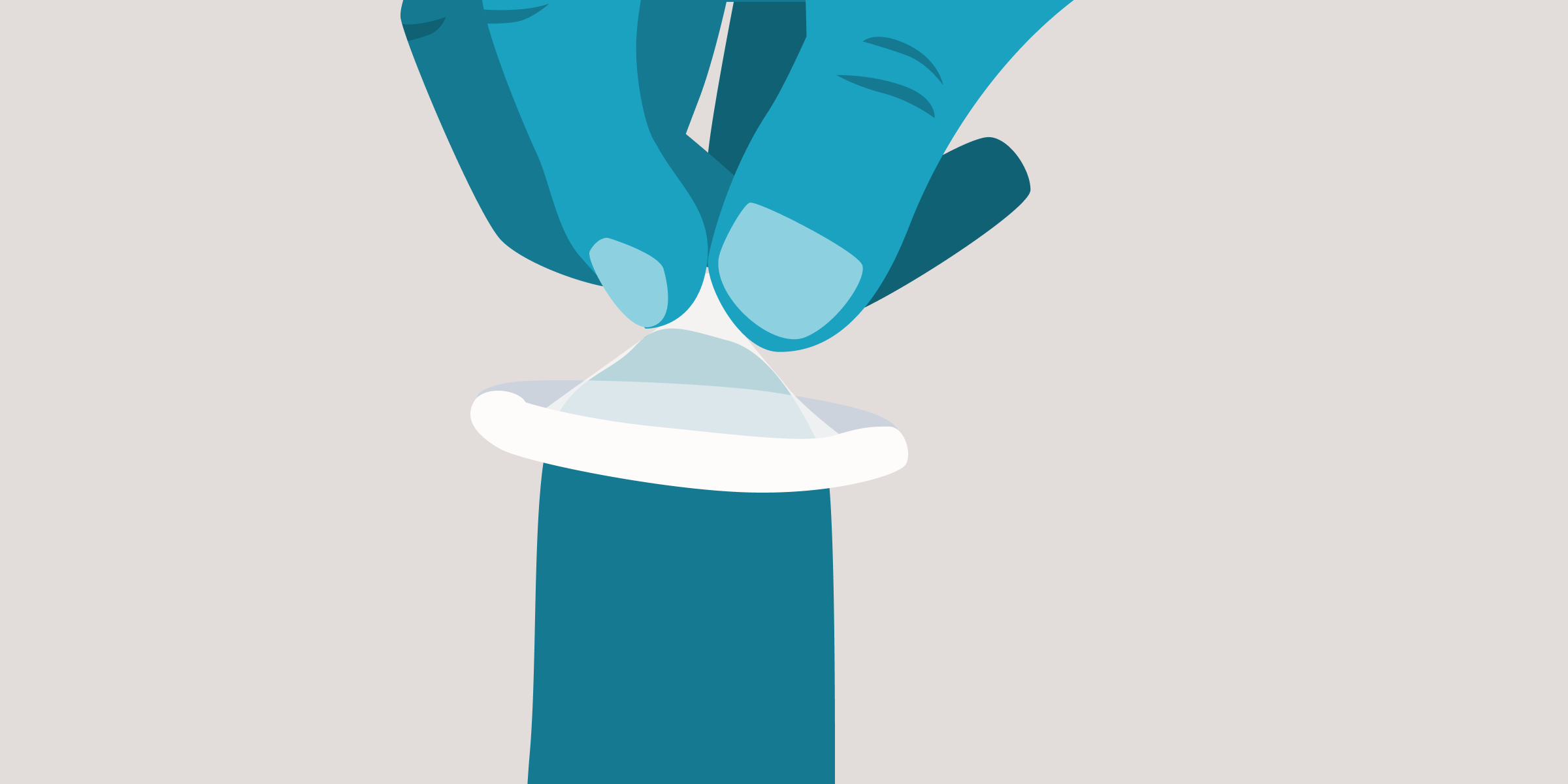Illustrations by Marta Pucci and Emma Günther
How to use a condom
A step-by-step guide

Top things to know:
Using a condom correctly is 98% effective at preventing pregnancy
Latex or polyurethane condoms are more effective at preventing sexually transmitted infections (STIs) than natural membrane condoms
Wearing a condom before engaging in oral, vaginal, or anal sex lowers your risk of contracting STIs
When you use a condom correctly, it’s a very effective form of birth control—and protects you against STIs (1). Condoms act as a physical barrier to prevent sperm from entering the body (2).
There are external condoms (also known as “male” condoms) and internal condoms (“female” condoms). This article will cover how to use external condoms, which are the best birth control method for preventing STIs (2).
Consistent and correct condom use reduces your chances of developing gonorrhea, chlamydia, and syphilis (1). Correct use also prevents up to 95% of HIV cases that would have happened without a condom (3).
Knowing the correct way to use a condom can give you better protection against STIs and unplanned pregnancies (4).
When to use a condom
To protect yourself and your partner from STIs, it’s recommended to use condoms during penis-vagina sex, oral sex, and anal sex (1). Remember that STIs including syphilis, herpes, gonorrhea, HPV, and chlamydia can also be transmitted during oral and anal sex—so using protection for all types of sexual activity is important (5-7).
Even when using sex toys, covering them with condoms is a good way to prevent the transmission of STIs, as well as bacterial vaginosis (BV) (8,9).
Using a condom for period sex is also encouraged to prevent pregnancy and protect against STI transmission.
How effective are condoms?
Both internal (“female”) and external (“male”) condoms reduce the risk of unintended pregnancies, but external condoms are more effective (1). When used “perfectly” (meaning correctly and consistently with every act of sex) external condoms prevent pregnancy for 98 out of 100 women (1). In comparison, internal condoms prevent pregnancy for 95 out of 100 women when used perfectly (1).
However, under “typical” real-world conditions, the effectiveness of condoms can vary. With typical use, 79 out of 100 women who use internal condoms and 87 out of 100 women who use external condoms will be protected from unplanned pregnancy (10).
This difference between “perfect” and “typical” is mainly due to inconsistent use. This can include not using a condom with every act of sex, not using it throughout the entire duration, and using the wrong type of lubricant or not properly squeezing the air from the tip of the condom (which can make them less effective at preventing pregnancy) (10).
How to choose the right condom
An important part of using condoms correctly is choosing the right type of condom for your needs (10).
If a condom is uncomfortable, different sizes and types can offer a better fit. Using the correct size is important, as condoms that are too small or tight may be more likely to break, and the wrong size could slip off during intercourse (11).
Some people are allergic to polyurethane or latex condoms (2). They may experience an uncomfortable rash up to 48 hours after using the condom (12). For mild irritation, consider switching brands (3). Some people may be more sensitive to one brand than another (3).
If you or your partner have a latex allergy, natural membrane condoms are a good alternative, commonly called “lambskin” condoms (13). These condoms aren't effective at preventing STIs but are effective at preventing unplanned pregnancies (13). This is because natural membrane condoms have large pores that are too small for sperm to pass through but do allow the transmission of HIV and the virus that causes herpes (13).
Here’s how to use a (male) condom
1. Check the expiration date printed on the wrapper or box and make sure the condom is not past its expiry date (14). Don’t use a condom if it’s been in your pocket or a wallet for a while, because heat or friction may have damaged it (2).

2. Open the package carefully—avoid using your teeth or scissors (14). Take a look at the condom to check that it’s not brittle, dried out, or damaged (14,15). If it has rips, throw it away and use another (14).

3. Locate the direction of the reservoir tip (it looks like a little dome). This will help you roll the condom on in the correct direction. The rim of the condom should form a circle around the dome of the penis or object (14). If the rim is on the inside of the dome, then the condom will be inside out and will not roll down properly (3). If you place the condom on the wrong way, don’t turn it around and reuse it—start over with a new one (3).

4. Make sure you put the condom on before any contact with a partner’s mouth or genital area (vulva, vagina, anus, buttocks, and upper thighs) (13). Sperm may be present in pre-ejaculatory fluid (“pre-cum”) (16).
5. Pinch the tip of the condom and roll it onto an erect (hard) penis, leaving a little bit of space at the top to collect semen (14).

6. Roll the condom down the shaft all the way to the base of the penis (14). For people who are uncircumcised, it might be more comfortable to pull the foreskin back before placing the condom on the tip of the penis and rolling it down (14).
7. Wear the condom the whole time you’re having sex (14).
8. After ejaculation, hold the rim of the condom while pulling the penis out of the other partner’s body (2). Do this before the penis goes soft, so the condom doesn’t get too loose and let semen out (2). Carefully take off the condom to avoid spilling any semen (2).

9. Throw the condom away in the garbage—don’t flush it down the toilet (2).

Condoms are not reusable (10). Roll on a new condom every time you have vaginal, oral, or anal sex (13). You should also use a new condom if you switch from one kind of sex to another (such as from anal to vaginal) (3). Using the same condom for anal and vaginal intercourse can transfer bacteria from one part of the body to the other (3). A new condom may help prevent infections (3).
What about lubricant?
Lubricant (lube) can make sex feel better, and it helps stop condoms from breaking, slipping, or falling off (1).
The best lubricant to use with an external condom is water-based or silicone-based (1). Oil-based lubes (or any other oil products like petroleum jelly, baby oil, or mineral oil) should not be used with condoms, as they may cause them to break (1).
You can put a few drops of lubricant inside the tip of the condom before you roll it on (2). You can also add more lube on the inside or around the vagina (2). Make sure you’re not adding too much though, as this can cause the condom to lose its fit and slide off (3).
Are two condoms better than one?
You should only wear one condom at a time during intercourse (4). Using two at the same time may rip the condoms and make them less effective (4). This also applies if you use an external (male) condom together with an internal (female) condom (2).
If you want to maximize the effectiveness of your condom, try using a type of spermicide (17). Spermicides contain a chemical that disables sperm. When used in combination with a condom, it improves your protection against unplanned pregnancies (17). Spermicide should be put into the vagina near the cervix, not on the condom (2). Frequent use of some spermicides may make some people more susceptible to HIV, so it’s only recommended if both partners’ risk of HIV is low (2).
Where to get condoms
Condoms are less expensive than other forms of birth control and are widely available (2). You can find them in most pharmacies, gas stations, and grocery stores (2). Many locations sell lubricant, too. You don’t need a prescription to buy condoms (2).
Some areas may offer condoms for free or at a reduced cost. You may be able to find them at your local board of health or community health center. Reproductive health centers or family planning clinics may also offer them. Call ahead to see which locations have condoms in stock.
Summary
When used correctly, condoms are 98% effective at preventing pregnancy (1). They’re also the most effective birth control for preventing STIs.
For the best protection, use a condom the right way every time you engage in oral, vaginal, or anal intercourse (3). Condoms should fit snugly around the penis without causing pain. A proper fit will help keep it in place.
FAQs
What happens if you don’t pinch the tip of a condom?
Pinching the tip of the condom gets rid of extra air and creates a space for the semen (18). If you don’t pinch the tip of the condom, the semen may leak out (4).
What happens if you put a condom on inside out?
If you put the condom on inside out, you’ll have a hard time rolling it down the shaft of the penis. You could break or damage the condom by putting it on backward. When you put it on inside out, the outside of the condom is now contaminated with bodily fluids, like pre-cum. If you try to use the same condom, you could expose yourself to those fluids. Throw the condom out and grab a new one if this happens (11,3).
